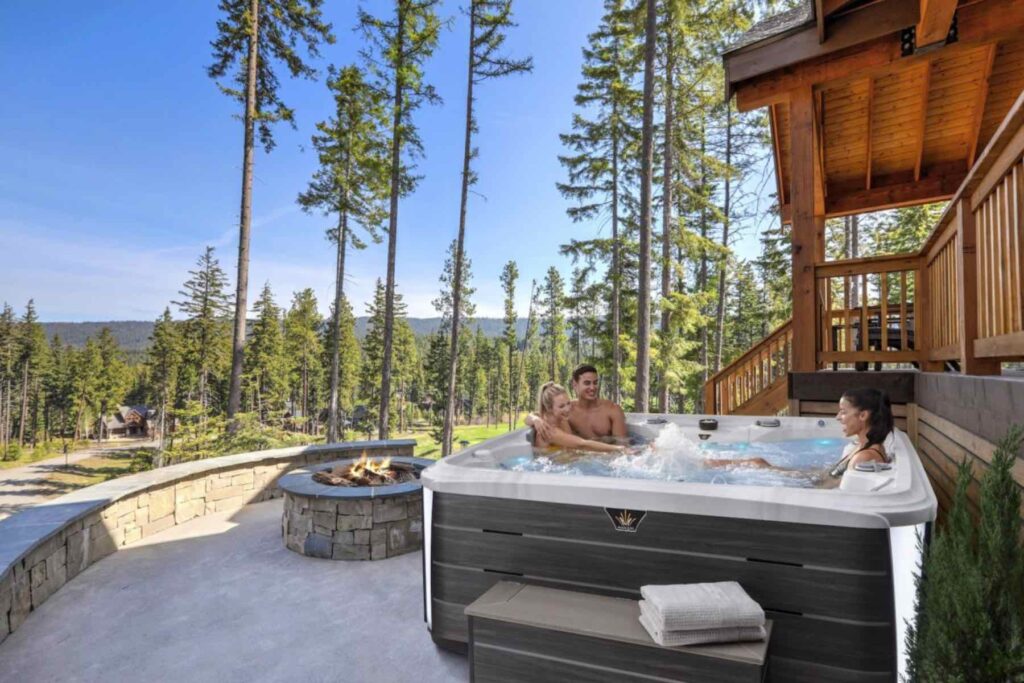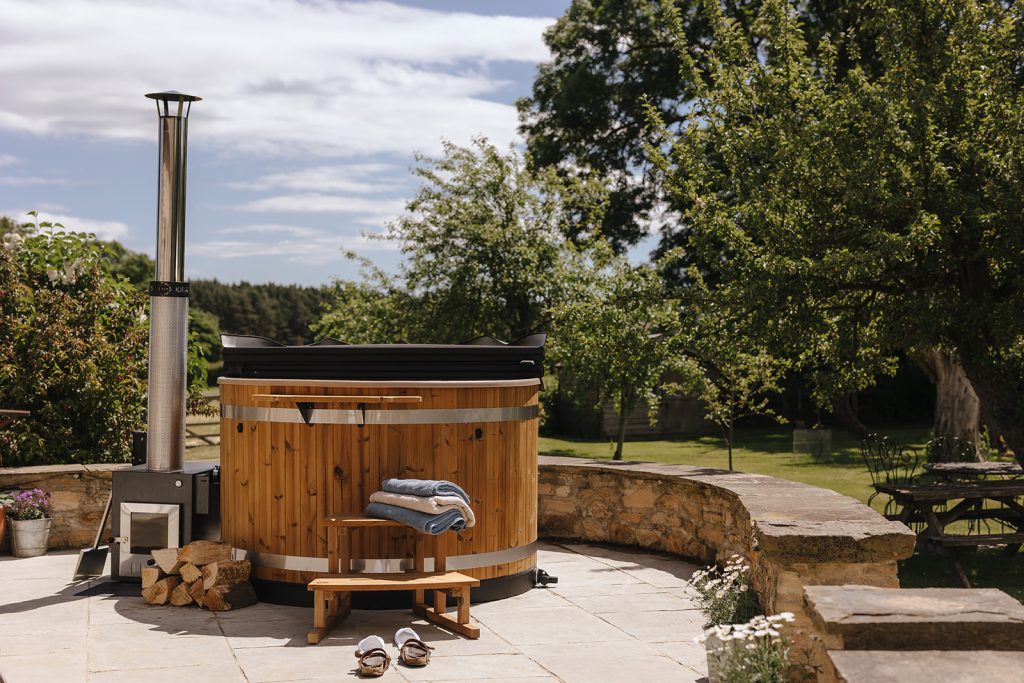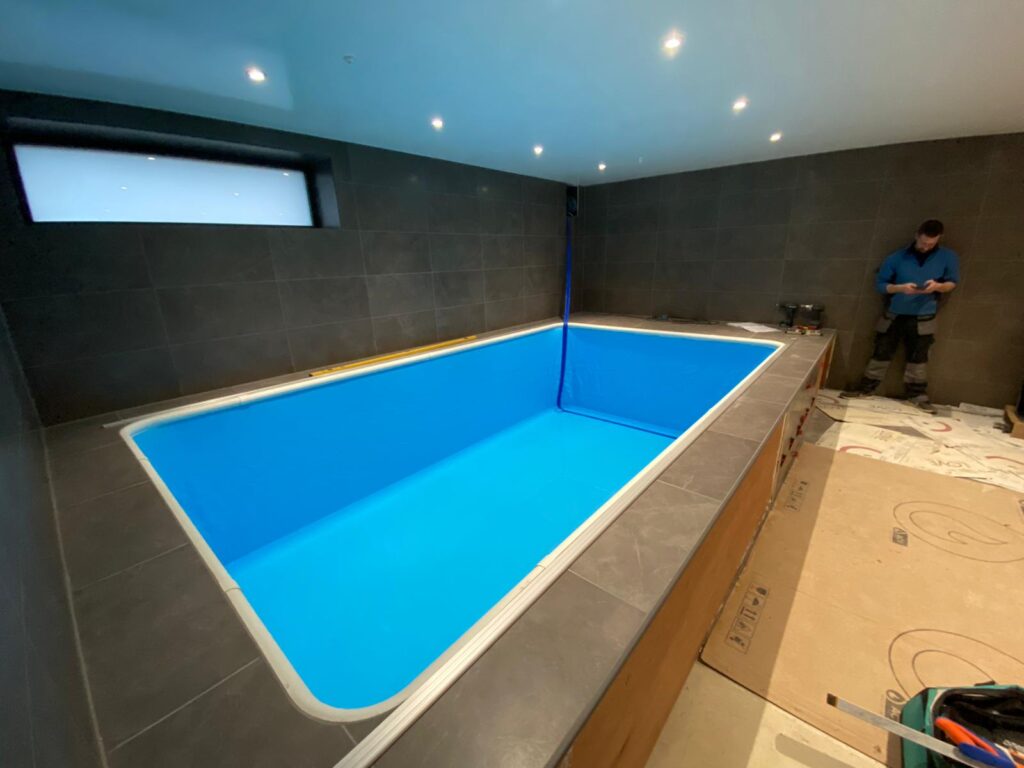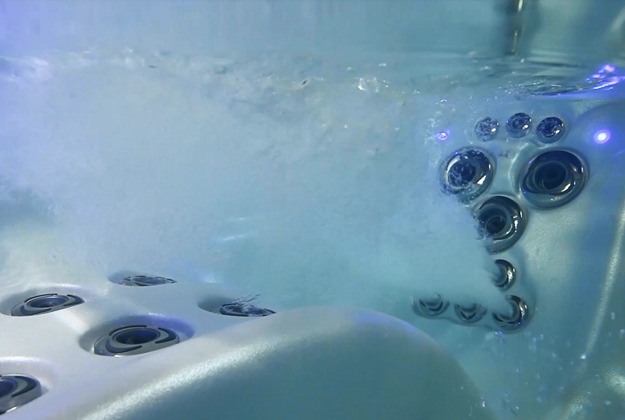With the current cost of living and gas and electricity price rises, the first thing on your mind if you’re shopping for a hot tub is what it will mean for your energy bills. If you’re thinking of investing in a home spa, you’ll likely have a few questions before you commit, such as how much energy does a hot tub use? What will a hot tub cost in electricity, service and maintenance? And how can I make my hot tub more energy efficient?
With any purchase, it’s best to do your research and make sure you’re informed beyond the initial price, so, with that in mind, we’ve put together this guide to hot tub running costs.
In this article, we’ll cover what annual costs you’ll need to plan for, how to run a hot tub efficiently and how much you should expect to pay each year.
What are the ongoing costs of running a hot tub?

- Electricity
- Maintenance/servicing
- After care and chemicals
Electricity
We’ll start with the one that’s on everyone’s mind at the moment – electricity costs. There are a few factors that will determine how much your hot tub will cost to run. These include:
- The tub itself – size, make and model, insulation and build quality, how efficient it is.
- How you use it – how often you use it, how long for, the temperature of the water and how often you use the jets.
- Your energy tariff – who you use as your supplier and how much they charge.
- The climate/season – the temperature outside can also affect costs.
Keeping electricity costs low
There are a number of things you can do to keep costs low and make the running of your hot tub as efficient as possible.
Choose a good-quality make and model
The first step in ensuring more affordable energy costs for your hot tub is choosing the right make and model. There are a number of components that can affect how much energy your hot tub uses, including:
- Size
- Insulation
- Insulating cover
- Heater
- Quality of pumps
- Program capability
- Location
Let’s look at these one by one.
Size
The first thing you need to ask yourself when buying a hot tub is, of course, the size you need. The bigger the hot tub, the more water it holds – and the more water it holds, the more it costs to heat it.
With that in mind, be honest with yourself about how many people will actually be using the hot tub on a regular basis and shop accordingly, as this will save you money in the long run.
If you do need a larger hot tub, then the insulation is going to be very important. More on this below…
Insulation

A well-insulated tub is crucial to curbing heating costs. Even if a cheap tub looks and feels as good as a quality option, it’s likely money will have been saved in the quality of the build and the insulation, spiking your running costs, and actually costing you more in the long term (and often in the short-term too).
Choosing a quality manufacturer and paying attention to the type of insulation they use is key – for example, the Marquis Spa range and Afon range are fully foam insulated, while American Whirlpool have their own patented insulation technology, making them some of the most energy efficient hot tubs on the market. Their Northern Exposure® Insulation has a triple layer heat lock system, and, not only that, but all of their hot tubs are also appliance grade and energy rated.
Insulating cover
Heat rises and water evaporates (90% of heat loss is through evaporation), and a well-fitting, good-quality cover that has a good seal, foam insulation and the right thickness will ensure you’re not losing heat – and with it money.
Many of the top brands now have Weathershield nylon covers, which are a stronger fabric than the conventional vinyl, resulting in fewer tears and rips. If you do have a vinyl cover, ensure it’s a quality brand, as a lot of the cheaper manufacturers will tend to perish, dry out and crack, allowing heat to escape.
It’s always worth keeping an eye on the weight of your cover – if it’s got very heavy, this can mean it has water ingress, resulting in the cells of the foam taking in water and losing their insulation capacity. Heavily used covers (for example, those in a holiday cottage or lodge) should get a couple of years’ use, while domestic ones can last for around four years. Making sure to replace yours regularly could save you on energy costs.
A new cover is worth its weight in gold. We usually keep quality covers in stock, so if you’re looking for a custom cover, or want more advice on whether it’s time to replace yours get in touch.
Heater
While heaters come in different sizes, this is unlikely to impact energy costs as, while a larger KW heater will use more energy, it will take less time to heat the water overall, balancing out the energy usage. That said, some heaters are more efficient than others – for example, American Whirlpool tubs and our Afon range use titanium heating elements, which are more energy efficient, and will also last longer in terms of corrosion. Some manufacturers, such as our Afon range, will offer warranties of five years if you have a titanium heater.
The most energy efficient way to run a hot tub is to heat it to the temperature you want and then let it stay at that temperature. Aside from it being more efficient to heat a hot tub this way, it’s also more convenient. However, if you know you won’t be using your hot tub for a while (eg if you go on holiday), lowering the set temperature by a few degrees or putting it into an economy cycle while it’s dormant could save you money.
Quality of pumps and components
There are a number of brands of pumps, but some of the most commonly used on the top manufacturers are Balboa and Gecko. In recent years, there has been a huge influx of cheaply made spas from lesser-known manufacturers around the world, and the majority of these use cheaper LX pumps. In our experience, the cheaper parts have less longevity of rubber seals and heating elements, which can impact efficiency.
Program capability
A good control system allows you to program your hot tub to heat during more affordable times of day, for example you can set the hot tub to heat in REST mode, among other things. Putting it in REST mode means it only heats during filtration cycles, and you can set lengthy filtration cycles to coordinate with lower electrical tariffs such as economy seven or the best times for your solar panel system (if you have one).
Location
Although you can’t control the climate or weather (sadly), you can take it into consideration when having your hot tub installed. Ensuring it’s sheltered from the wind and elements as much as possible will help to maintain its temperature. At Welsh Hot Tubs, we provide wind straps and additional clips and buckles to keep your cover secured in exposed areas.
Maintenance/servicing
If you’re a car owner, you’ll understand the importance of annual servicing to make sure everything is running as it should, prevent any issues and save you money in the long run.
The same is true of your hot tub. Booking in an annual service means you can plan ahead for the cost and have peace of mind that your spa will be kept in tip-top condition. If you buy through a reputable dealer, they should offer service plans. At Welsh Hot Tubs, we offer a 10% discount when you sign up to our service plans – get in touch for details.
Water care and chemicals
Not only is water care vital for health and hygiene, but it’s also important for ensuring you don’t void your warranty. Your dealer should be able to advise you on everything you need and how to use it, as well as supply chemical packs with everything you require to keep your hot tub clean and in good working order.
Chemicals fall into three main categories:
- Sanitisers
- Balancers
- Cleaners
Within these you’ll find:
Sanitisers:
- Chlorine or bromine
- Shock treatment (chlorine or non-chlorine)
Balancers:
- PH increaser and decreaser
- Alkalinity raiser
- Hardness raiser/anti-scale
Cleaners:
- Surface cleaner
- Filter cleaner
- Foam remover
- Spa clarifier or O-Care
Additional:
- Sanitiser/balancer test strips
- Filters
It may seem like a lot to consider, but most dealers will be able to provide you with packs of all the chemicals you need and train you in care and maintenance to make sure you know how to use them and get the best performance from your hot tub.
If you’re looking to cut the number of chemicals you need and make caring for your spa even more efficient and convenient, then O-Care is also a great option. It’s gentle on the skin and prevents biofilm from settling on spa surfaces, which, in turn, reduces the amount of sanitiser required to keep your spa clean. For added convenience, it has an app that will guide you through solving any common issues and help you to get the best balance for your spa.
So, how much does it cost to run a hot tub in 2022?
This isn’t that straightforward to answer, as it depends on the range of factors mentioned above, which give a huge number of variables.
However, up until now, we’ve estimated running costs of £1 a day on a 1,000-litre hot tub, and £1.50 a day on 1,500-litre hot tub. With the current rise in electricity costs, we believe a safe estimate on a good-quality tub with good insulation would be rising to £1.50 a day on the 1,000-litre tub and to £2 a day on the 1,500-litre tub. Even with the new tariffs, smaller tubs, such as our 700-litre American Whirlpool 451, could be as little as £1.05 a day to run. Again, this is just an estimate based on average usage. Be sure to take monthly meter readings so you can keep track of your energy costs and avoid any surprises.
So, here’s an example of an annual breakdown:
- Electricity – £383 to £730
- Maintenance/servicing – £300 to £420
- Water care/filters – £200 to £300
Over a year, based on our estimates above, the cost of running a hot tub could set you back roughly £883 to £1,450 – or £62 to £120 a month – which breaks down to around the price of a daily cup of coffee, a weekly takeaway or a monthly gym membership.
The bottom line
While there’s no disputing that energy costs have spiked in 2022, by getting good advice from your dealer, choosing the right brand and taking a few energy saving steps, you can keep the cost of running a hot tub to a manageable level and continue enjoying your at-home spa.
For more information or advice on buying a hot tub, or to book a showroom visit, contact us online or give us a call on 01974 241 642.





